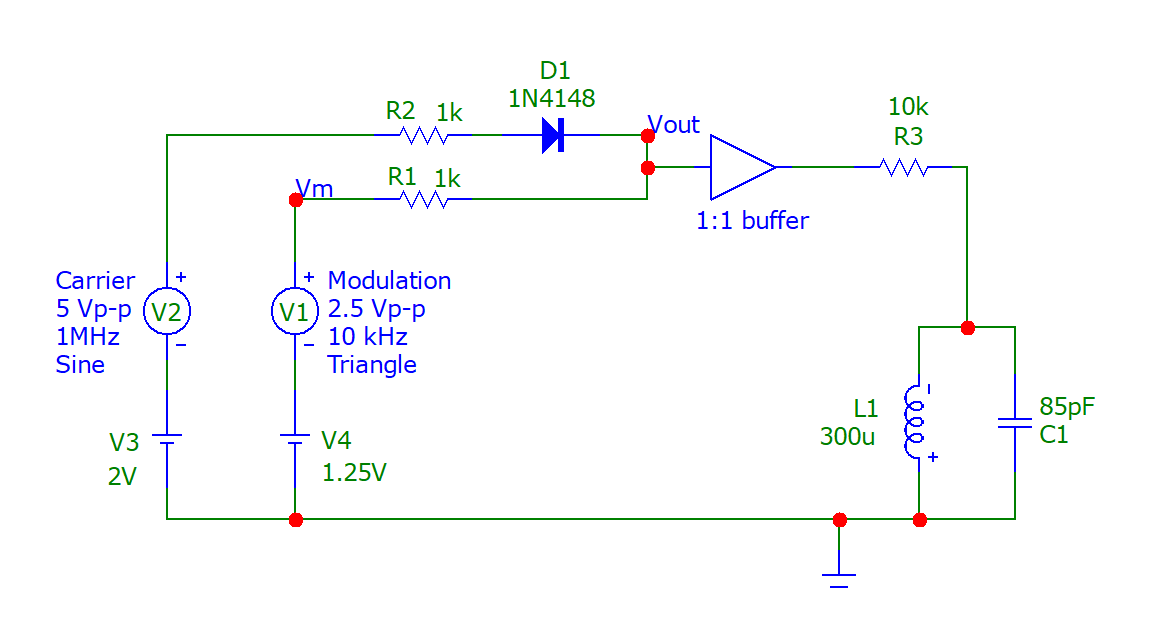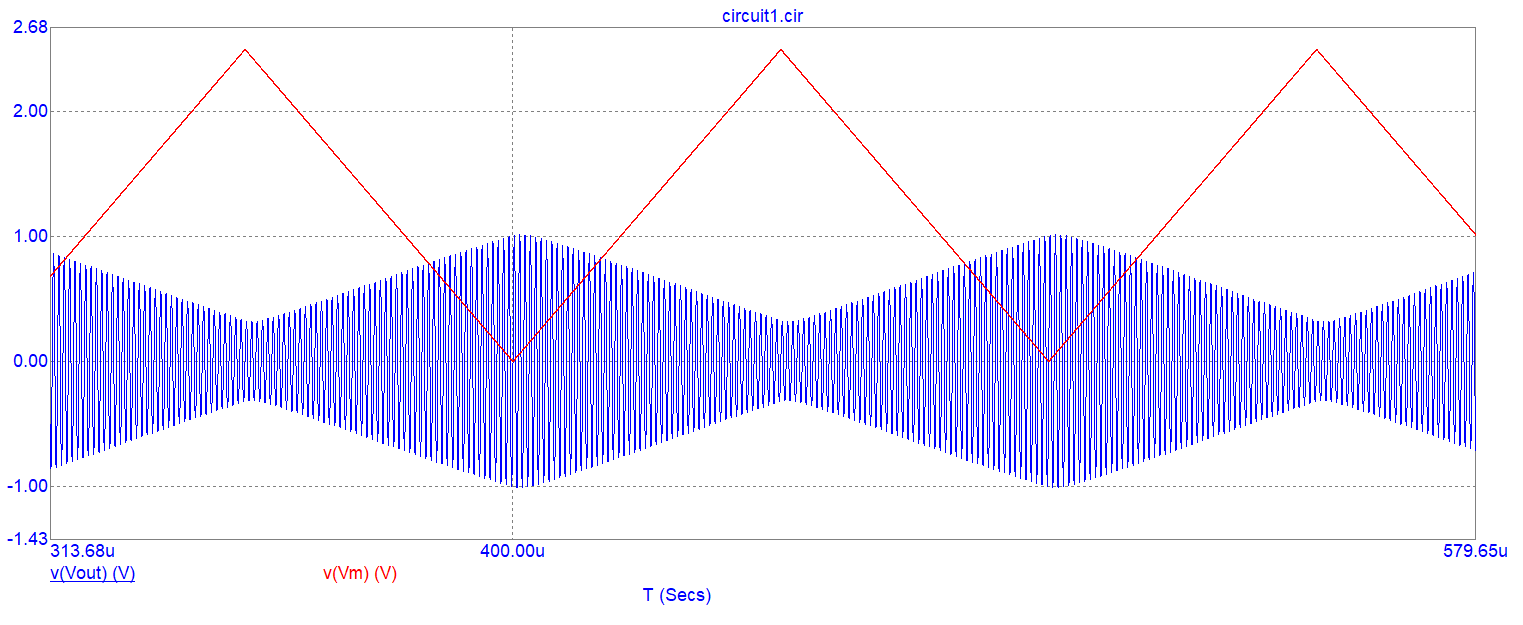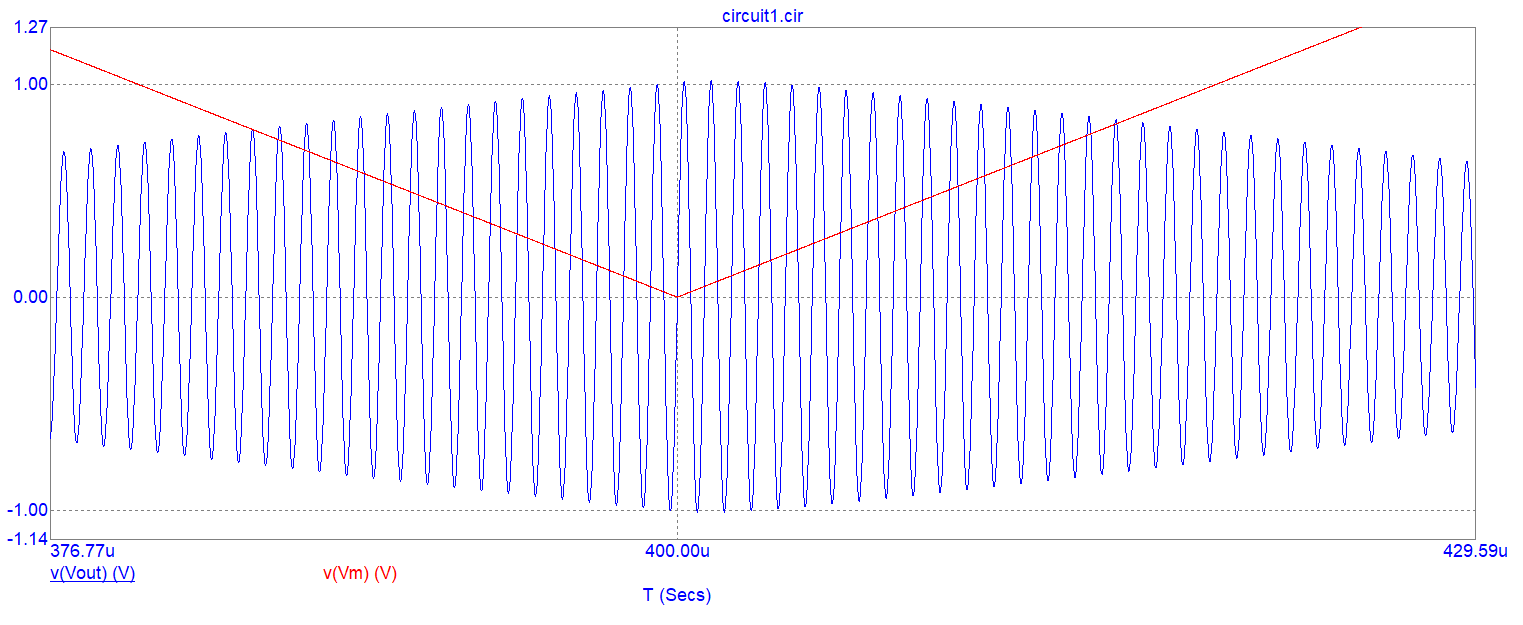Post History
There are plenty of ways a single diode and a couple of resistors can perform multiplication (RF mixing). Consider this circuit that takes two inputs (a 1 MHz sinusoidal carrier wave and a 10 kHz t...
#1: Initial revision
There are plenty of ways a single diode and a couple of resistors can perform multiplication (RF mixing). Consider this circuit that takes two inputs (a 1 MHz sinusoidal carrier wave and a 10 kHz triangle wave used to modulate the carrier): -  Now look at the signal on the cathode of the diode (Vout): -  You can see that the 1 MHz signal (blue) is amplitude modulated by the triangle signal in red. This change is cyclic and repeating. It does now contain harmonics but, do you believe that (or would you rather see what the final waveform looks like after it has been band-pass filtered by L1 and C1). I guess you'd rather see it so, here is the output waveform at the node of R3 and L1/C1: -  So, do you believe that a diode can create new frequencies at the output? Here's a closer view of the blue signal. It shows decent sinewave shape and it shows decent and linear amplitude modulation: -  One diode, two resistors and a bit of DC biasing coupled with a buffer and a band-pass filter gives incredible amplitude modulation quality. But, it's all down to the diode and how the triangle wave cyclically causes it not to conduct the 1 MHz sinewave. There are quite literally dozens of ways a diode can be used to do the same thing.


















